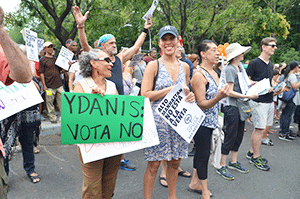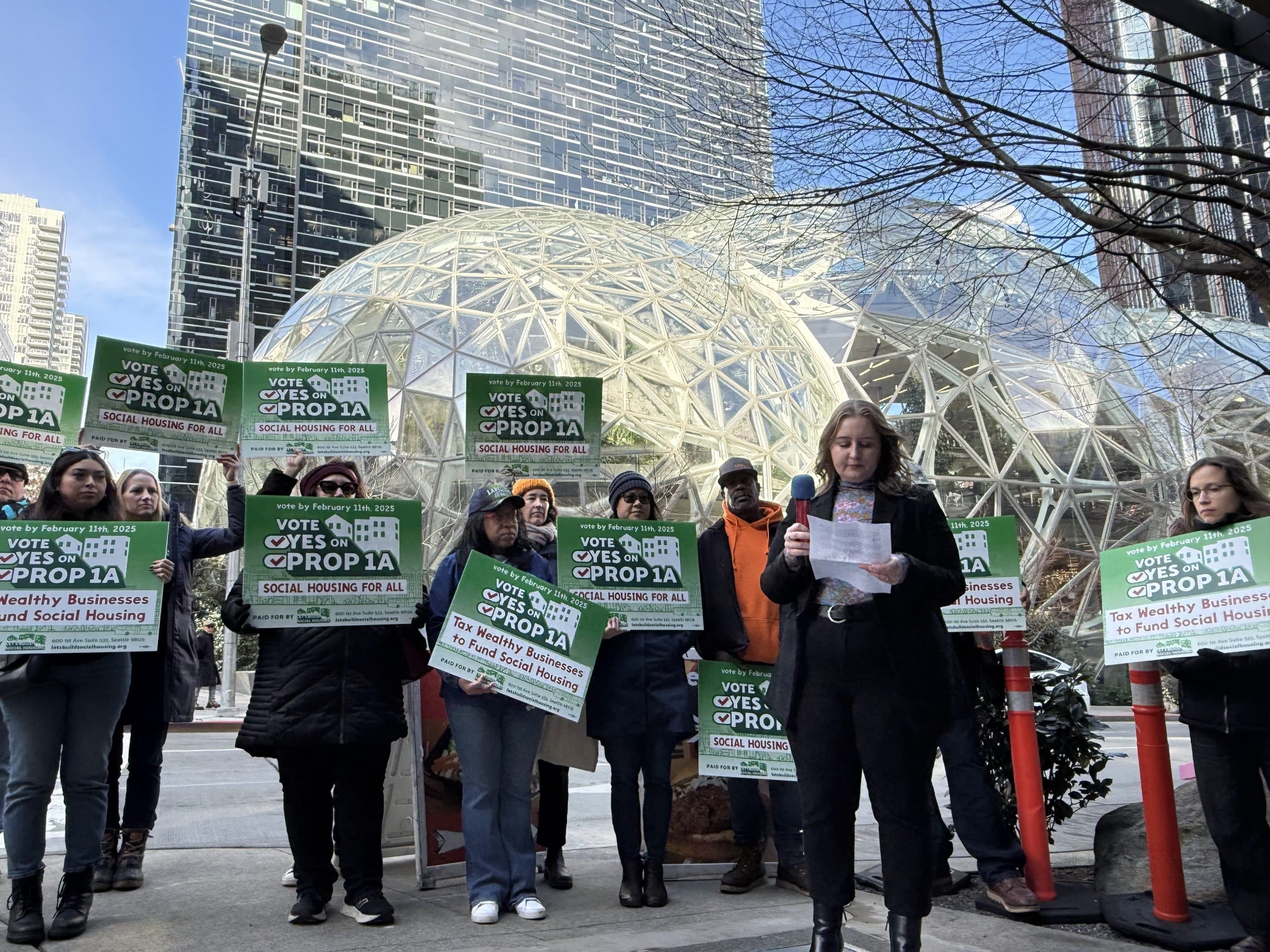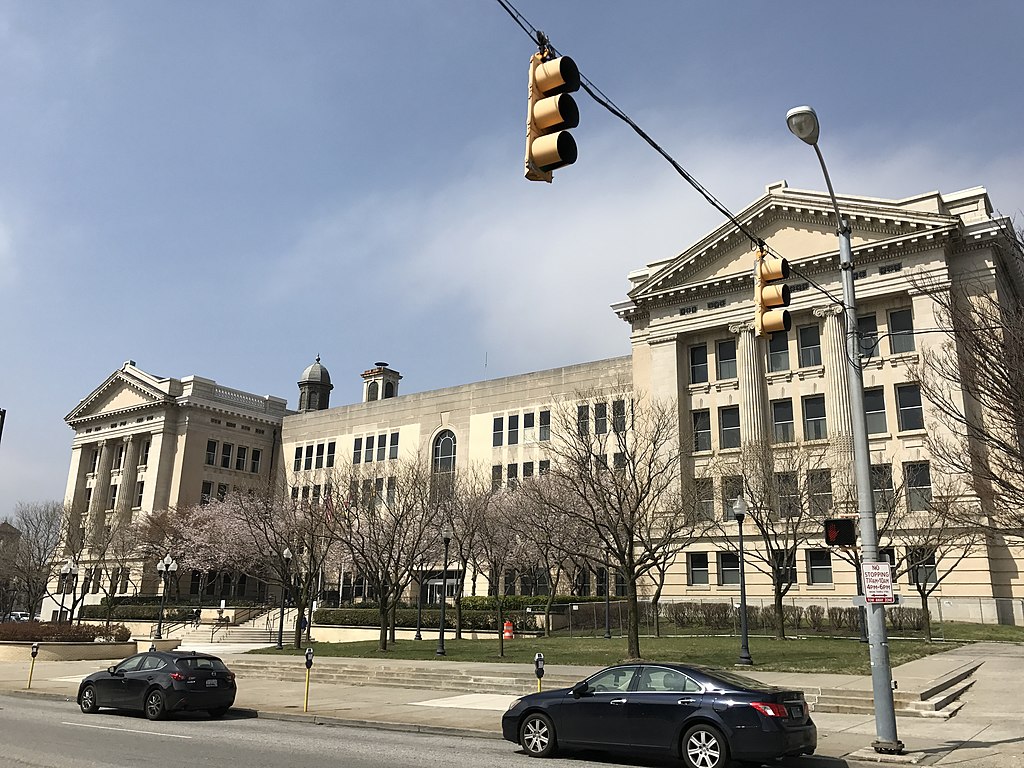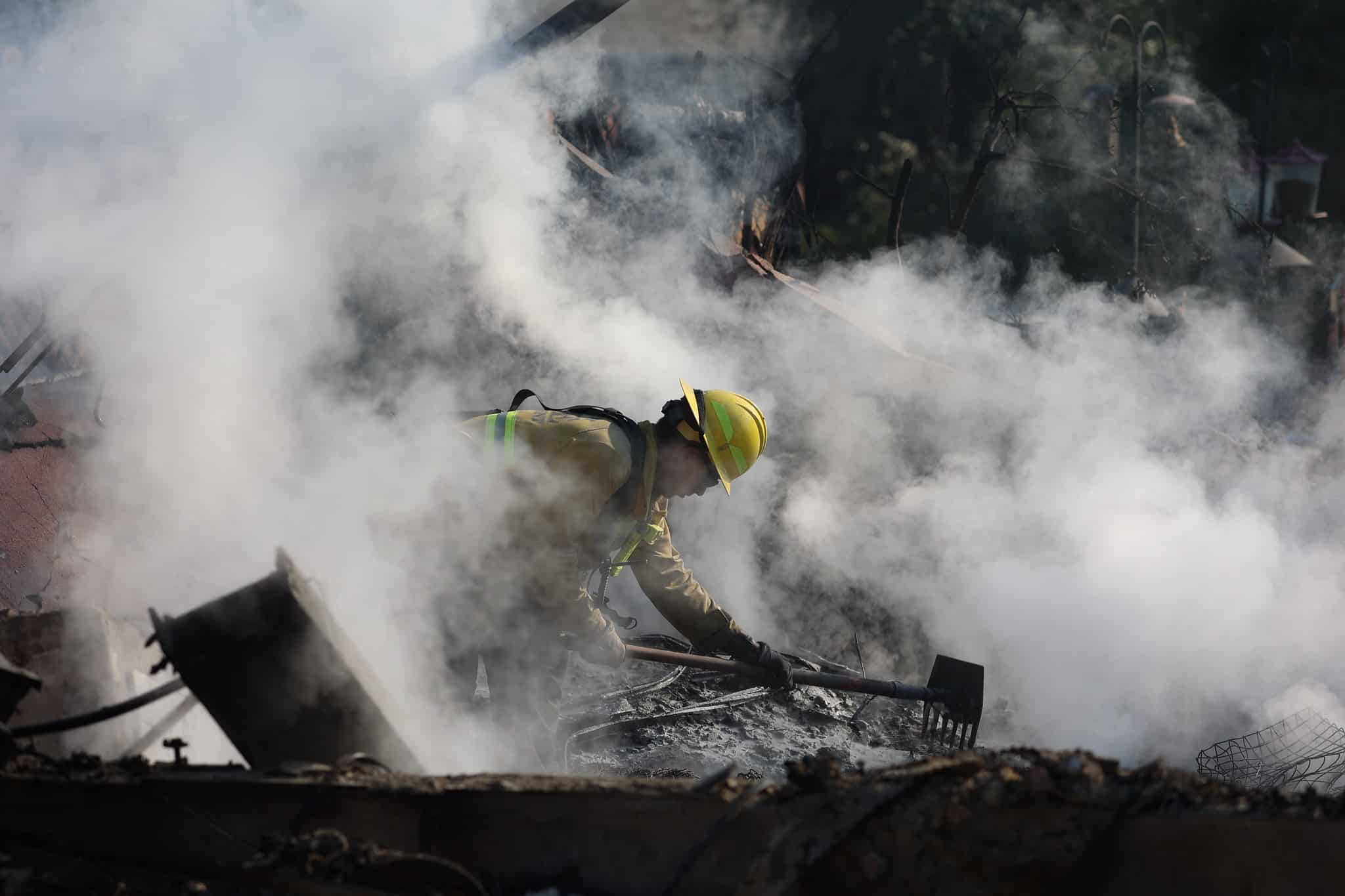
Recently, Mayor Bill de Blasio’s ambitious affordable housing policy goals have generated some high-profile community struggles that have raised the specter of wider NIMBY influence. Some of them may indeed be rooted in NIMBYism, but most are not, and instead swirl around the legitimate tension that arises in applying the mayor’s new Mandatory Inclusionary Housing policy in neighborhoods that are concerned about displacement. One example is a recent decision by a local city council member to block a vote on the proposed Sherman Plaza housing development in the Inwood neighborhood of Manhattan, an early test-case for the mayor’s new policy.
At the Inwood site, a private for-profit developer sought an upzoning to allow a 355-unit building. The zoning change would make the site subject to the city’s new Mandatory Inclusionary Housing (MIH) policy—in this case, a requirement that 20 percent of the apartments be affordable to a family earning approximately $35,000 a year (40 percent of Area Median Income). Many voices in the local community raised concerns about the project because of its likely impact on existing affordable housing in the area. They felt that a development that adds 80 percent market-rate units, even if the 20 percent affordable units are meaningfully affordable, was not a net gain for a community that is facing significant displacement pressures.
Inwood is indeed facing a displacement storm. Longtime neighborhood residents see a vibrant community with a concentration of working-class, Spanish-speaking New Yorkers. But private real estate developers see a neighborhood with high-quality building stock within easy commute to the business centers of Manhattan, and the low-rent paying current residents as the only thing standing between them and windfall profits. As a result, local residents have faced major harassment and displacement. In the past 7 years, ANHD research shows the price at which developers are flipping existing apartment buildings in the neighborhood has risen by a remarkable 96 percent, while the incomes of longtime residents have risen by only a fraction. The neighborhood has lost more than 5,600 rent-regulated units since 2007, a devastating blow for a working-class community in a city where affordable housing is scarce.
This is one of the tensions inherent in the MIH policy—because the population of the city is growing (with an expected increase of 800,000 people by 2030). If we do not increase the overall amount of housing, the simple laws of supply and demand will drive up prices for everyone. And many communities are correct to point out that where new housing gets built matters because it can focus increased displacement pressure on that particular neighborhood. The answer, from the point of view of the community, is to increase the number of apartments in the development that are deeply and permanently affordable.
In Inwood and other neighborhoods facing displacement pressure, building market-rate housing is not a neutral act. Bringing in more market-rate apartments increases the overall “secondary displacement” pressures as wealthier residents flood in and change the overall housing economics of a community. If the amount and depth of affordability of the new affordable apartments do not offset the impact of the new market-rate units, a neighborhood may then decide that the net effect of a new development is not in its interest. In the case of Sherman Plaza, it is ANHD’s understanding that the de Blasio administration and the local councilmember tried to come to an agreement that would have used city subsidy to add to the number of affordable apartments in the building, but the sides could not agree to a deal that both met the legitimate affordability concerns of the community and the legitimate fiscal concerns of the city.
None of this is to say that forms of NIMBYism don’t exist in New York City. Some recent examples of neighborhood pushback include a vicious local campaign to stop the placement of a homeless shelter in Maspeth, Queens, fights against upzonings in wealthier areas that cite preserving the character of the community as the reason for their opposition, and the sidelining of an affordable housing development in Sunnyside, Queens. The Maspeth homeless shelter fight pointed out some flaws in the city’s plan, but the language used and sentiments expressed by opposed community members was especially vicious and racially tinged. Activists who say they want to preserve the community's character make a reasonable point that big real estate interests have too much power and often ride roughshod over neighborhood concerns, although the inevitable conclusion of their work generally tends to relegate any new development (and new affordable housing in particular) to lower-income neighborhoods of color. The Sunnyside community raised some reasonable concerns about the projects’ design, but the end result was that a much-needed affordable housing development didn’t go forward.
New York City is facing a desperate housing crisis, and ANHD believes that decision makers, policy practitioners, and community activists should start with the assumption that any new 100 percent affordable development, especially one built by a mission-driven developer who will keep the housing permanently affordable, should get built. All development should be subject to the existing process for local input and refinement, but in the end, the overwhelming need for affordable housing should tend toward making any necessary compromises and getting the project built. ANHD is also one of the groups that led the fight for an MIH policy, and we believe strongly that a well-crafted policy can be part of an overall city housing plan. While we argued for a final city policy with a greater percentage of affordable housing and deeper affordability, we believe that the mayor’s MIH plan is still the strongest and most ambitious in the county and deserves support as part of an overall affordability policy.
But any plan to upzone in a neighborhood facing displacement pressure must also include a plan for protecting and preserving existing affordable housing. One factor that could make it easier for the city to win support for future rezoning deals is by demonstrating to the community that the city takes the problem of displacement as seriously as it does the need for new construction. A step toward this goal should be passing legislation for a “Citywide Certificate of No Harassment,” which the city's administration committed to last year as part of an overall MIH deal.
People committed to affordable housing are right to call out NIMBYism where they see it, but they should also recognize legitimate community struggles.
(Photo credit: Inwood residents gathered at the intersection of Sherman Avenue and Broadway on Saturday to protest the construction of Sherman Plaza. Photo by Gaby Del Valle for Gothamist)




Very good points made by Mr. Dulchin. In New York, space is always at a premium, so it is especially important to ensure that affordable apartments are not squeezed out in order to obtain development. In truth, you will always have development. It is especially important in a place such as Inwood, which is well served by public transportation on a narrow part of Manhattan, that working people’s housing is maintained.